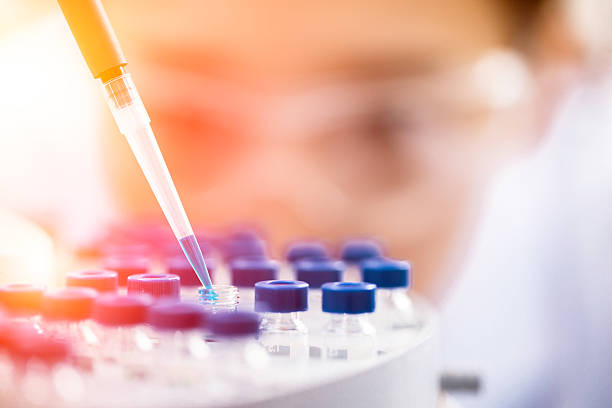The Fascinating World of Nanotechnology: Big Impact on Small Scales
Nanotechnology is a rapidly growing field of science and engineering that focuses on the manipulation and design of materials, devices, and systems at the nanoscale, typically at dimensions of 1 to 100 nanometers (nm), or one-billionth of a meter. To put this into perspective, a nanometer is about 100,000 times smaller than the diameter of a human hair. Although the scale is incredibly tiny, the impact of nanotechnology is immense, touching nearly every sector, from medicine and electronics to energy and environmental sustainability. This article explores the world of nanotechnology, its applications, and how it is poised to revolutionize industries and improve our daily lives.
1. What is Nanotechnology?
Nanotechnology is the science of manipulating matter at the atomic and molecular scale to create new materials, devices, and systems with unique properties and functions. At the nanoscale, materials often exhibit different physical, chemical, and biological properties compared to their larger counterparts. These changes occur due to quantum effects and the increased surface area relative to volume that becomes significant at smaller scales.
For example, at the nanoscale, gold can change from its familiar metallic appearance to a deep red or purple color, and carbon nanotubes, which are microscopic cylinders of carbon atoms, can be stronger than steel but much lighter. These unique properties have made nanotechnology a critical tool for innovation across many fields.
2. How Nanotechnology Works: The Science Behind It
Nanotechnology relies on manipulating atoms and molecules with precision. Researchers can build or modify structures at the molecular level to achieve specific goals, such as altering a material’s strength, electrical conductivity, or chemical reactivity. There are two main approaches to nanotechnology:
2.1 Bottom-Up Approach
The bottom-up approach involves building nanomaterials from smaller building blocks, such as atoms, molecules, or nanoparticles. This can be done through chemical reactions or self-assembly processes where materials spontaneously arrange themselves into desired structures. An example of this is the creation of nanoparticles that self-organize into complex structures, which is useful in creating novel drug delivery systems in medicine or advanced materials for industrial applications.
2.2 Top-Down Approach
The top-down approach starts with larger materials and breaks them down into nanoscale components. Techniques like lithography, where patterns are etched onto surfaces at a microscopic scale, are used to carve out nanostructures from bulk materials. This approach is commonly used in semiconductor manufacturing and electronics.
Both approaches are used in combination depending on the application, and researchers continue to innovate new ways to manipulate materials at the nanoscale.
3. Applications of Nanotechnology: Revolutionizing Industries
Nanotechnology is already having a profound impact across a wide range of industries. Below are some key areas where nanotechnology is making a significant difference:
3.1 Medicine and Healthcare
Nanotechnology has enormous potential in the medical field, especially in terms of drug delivery, diagnostics, and disease treatment. The ability to design nanoparticles that can specifically target diseased cells—such as cancer cells—without affecting healthy tissue is a major breakthrough. This precision reduces side effects and improves treatment efficacy.
- Targeted Drug Delivery: Nanoparticles can be engineered to deliver drugs directly to specific cells or tissues. For example, liposomes and polymeric nanoparticles are being used in cancer therapies to deliver chemotherapeutic agents directly to tumor cells, minimizing the damage to surrounding healthy cells and reducing the adverse effects of chemotherapy.
- Nanorobots for Surgery: In the future, nanorobots could be used for minimally invasive surgeries, performing delicate tasks at the cellular level, such as clearing blocked arteries or repairing damaged tissues. Researchers are also working on nano-enabled biosensors that could provide real-time monitoring of patient conditions, improving the diagnosis and management of chronic diseases.
- Improved Diagnostic Tools: Nanotechnology allows for more sensitive diagnostic techniques. Nanoparticles can be designed to bind to specific biomolecules, enabling the detection of diseases such as cancer, Alzheimer’s, or cardiovascular diseases at earlier stages. For example, quantum dots are being used in imaging and diagnostics to highlight cells or tissues of interest, offering a clearer view for doctors.
3.2 Electronics and Computing
Nanotechnology has played a crucial role in advancing electronics and computing. As the demand for smaller, faster, and more powerful devices increases, the ability to manipulate materials at the nanoscale has allowed for significant improvements in performance.
- Transistor Miniaturization: The miniaturization of transistors, which are the building blocks of computers, has been made possible by nanotechnology. As transistors become smaller, more can fit onto a chip, increasing the processing power of devices like smartphones, computers, and other electronic gadgets. This has been central to the ongoing trend of faster, smaller, and more energy-efficient electronics.
- Quantum Computing: Nanotechnology is also playing a role in the development of quantum computers. Quantum computers, which use quantum bits (qubits) instead of binary bits, have the potential to solve complex problems that are currently intractable for classical computers. Researchers are exploring the use of nanomaterials, such as quantum dots and superconducting nanowires, to build more efficient quantum computing systems.
- Flexible Electronics: Flexible, lightweight, and stretchable electronics, made possible by advances in nanomaterials, are poised to revolutionize industries such as healthcare, wearables, and energy storage. For instance, flexible solar cells and wearable health monitoring devices could become commonplace, improving energy generation and healthcare delivery.
3.3 Environmental Sustainability
Nanotechnology holds promise for tackling some of the world’s most pressing environmental challenges, from cleaning up pollution to improving energy efficiency.
- Water Purification: Nanomaterials like nanoparticles and nanotubes are being used to remove contaminants from water, including heavy metals, bacteria, and salts. For example, nanofiltration membranes can selectively remove harmful substances while allowing clean water to pass through. These advancements could be a game-changer in providing clean drinking water, especially in areas with water scarcity.
- Energy Storage and Conversion: Nanotechnology is enhancing energy storage and conversion technologies, which is crucial for advancing renewable energy solutions. Nanomaterials are being used to develop more efficient batteries, supercapacitors, and fuel cells. For instance, nanostructured electrodes in lithium-ion batteries can increase energy density, leading to longer-lasting batteries for electric vehicles and renewable energy storage.
- Carbon Capture and Conversion: Nanotechnology also plays a role in reducing greenhouse gas emissions through improved carbon capture and conversion technologies. Nanomaterials can capture and store carbon dioxide (CO2) more efficiently, and there is ongoing research into converting captured CO2 into useful products, such as fuels or chemicals, helping to reduce the overall impact of industrial emissions on climate change.
3.4 Agriculture and Food
Nanotechnology is revolutionizing agriculture by improving crop yields, reducing the need for pesticides, and enhancing food safety.
- Precision Agriculture: Nanotechnology enables the development of advanced sensors and monitoring systems for agriculture. Nanosensors can detect soil moisture, nutrient levels, and pest presence, allowing farmers to make informed decisions about irrigation, fertilization, and pesticide use. This reduces waste, increases productivity, and minimizes the environmental impact of farming.
- Nano-Encapsulation for Pesticides and Fertilizers: Nanotechnology can be used to create nano-encapsulated pesticides and fertilizers that are released slowly over time, reducing the need for frequent applications. This targeted release improves the efficiency of these substances, minimizes waste, and protects the environment.
- Food Packaging: Nanotechnology is also enhancing food packaging by making it more durable, antimicrobial, and capable of preserving food for longer periods. Nano-coatings on food packaging materials can reduce spoilage, improve shelf life, and provide better protection against contamination.
4. Ethical Considerations and Challenges
While the potential of nanotechnology is vast, there are several challenges and ethical concerns that must be addressed as the field advances. One concern is the environmental impact of nanomaterials, as their small size and high reactivity could lead to unintended consequences if they accumulate in the environment. Researchers are working to better understand the environmental fate of nanomaterials and how to manage their use safely.
Another concern is the health and safety of nanomaterials. Although nanotechnology has great promise in medicine, there are still questions about the long-term effects of exposure to nanoparticles, particularly in terms of toxicity. Safety protocols and regulatory frameworks are being developed to ensure that nanomaterials are used safely in consumer products, medical treatments, and industrial applications.
5. Conclusion
Nanotechnology, with its ability to manipulate materials at the atomic and molecular level, is poised to have a transformative impact across a wide range of industries. From revolutionizing medicine and electronics to improving environmental sustainability and agriculture, the applications of nanotechnology are vast and varied. As researchers continue to explore the potential of nanomaterials, we can expect even more exciting innovations in the years to come.
However, as with any transformative technology, nanotechnology must be carefully managed to mitigate potential risks to human health, the environment, and society. By addressing ethical concerns, implementing proper safety measures, and continuing to innovate responsibly, nanotechnology has the potential to drive significant positive change across the globe, making a big impact on small scales.






